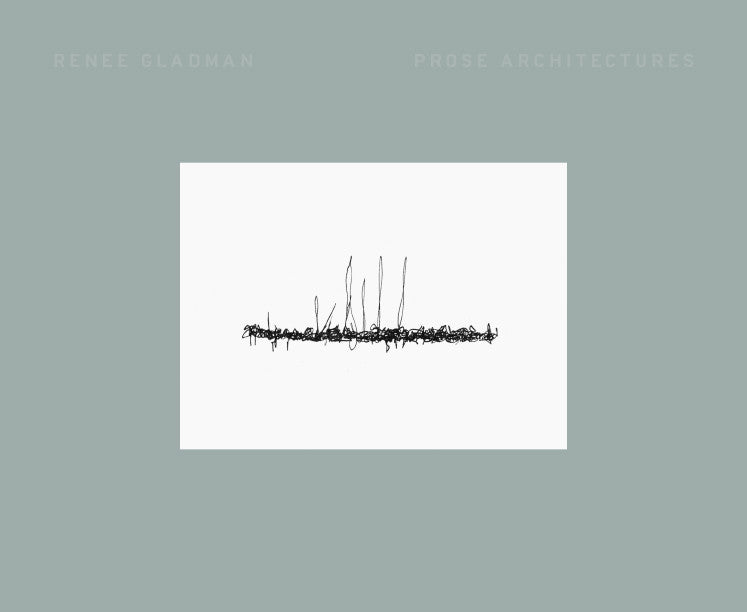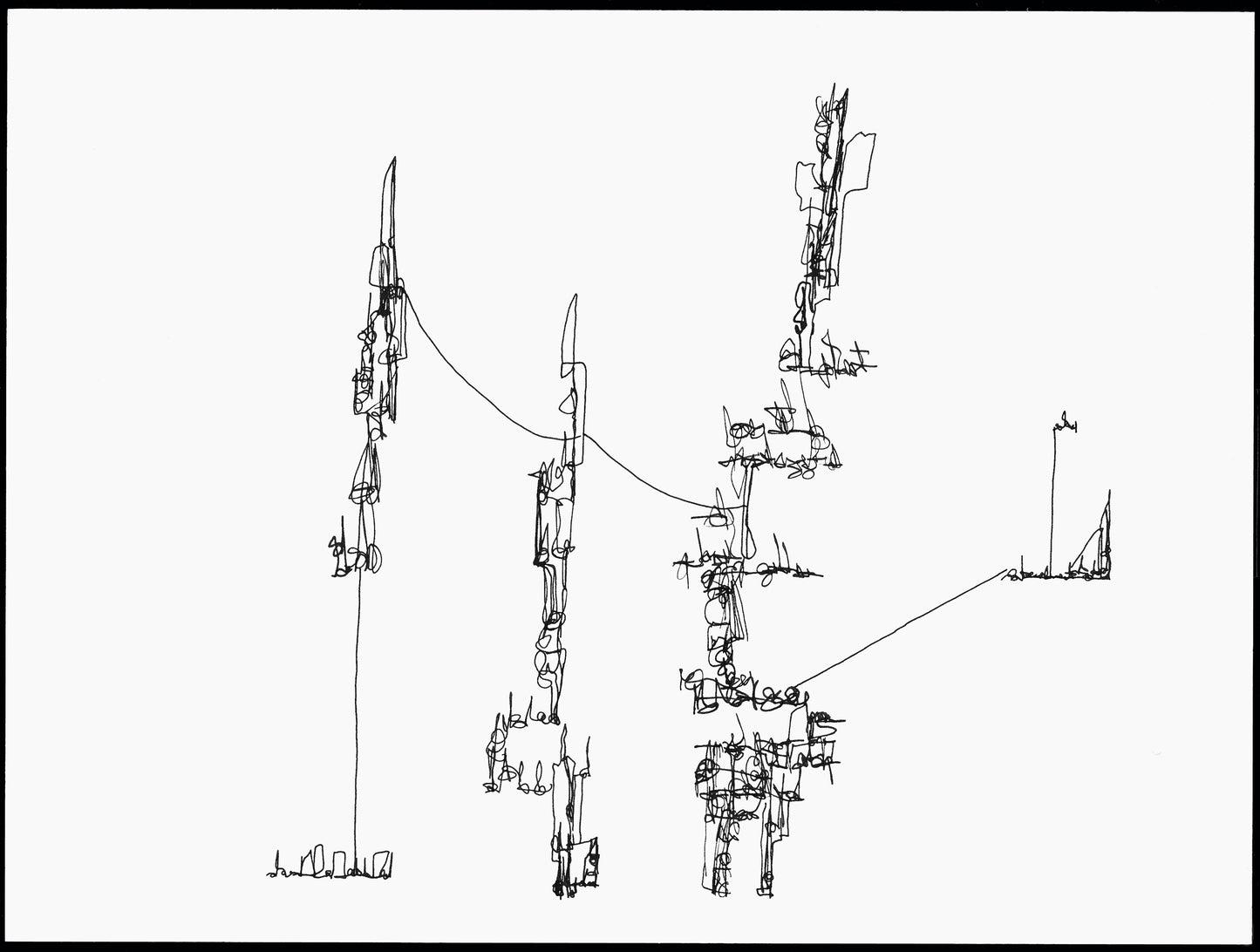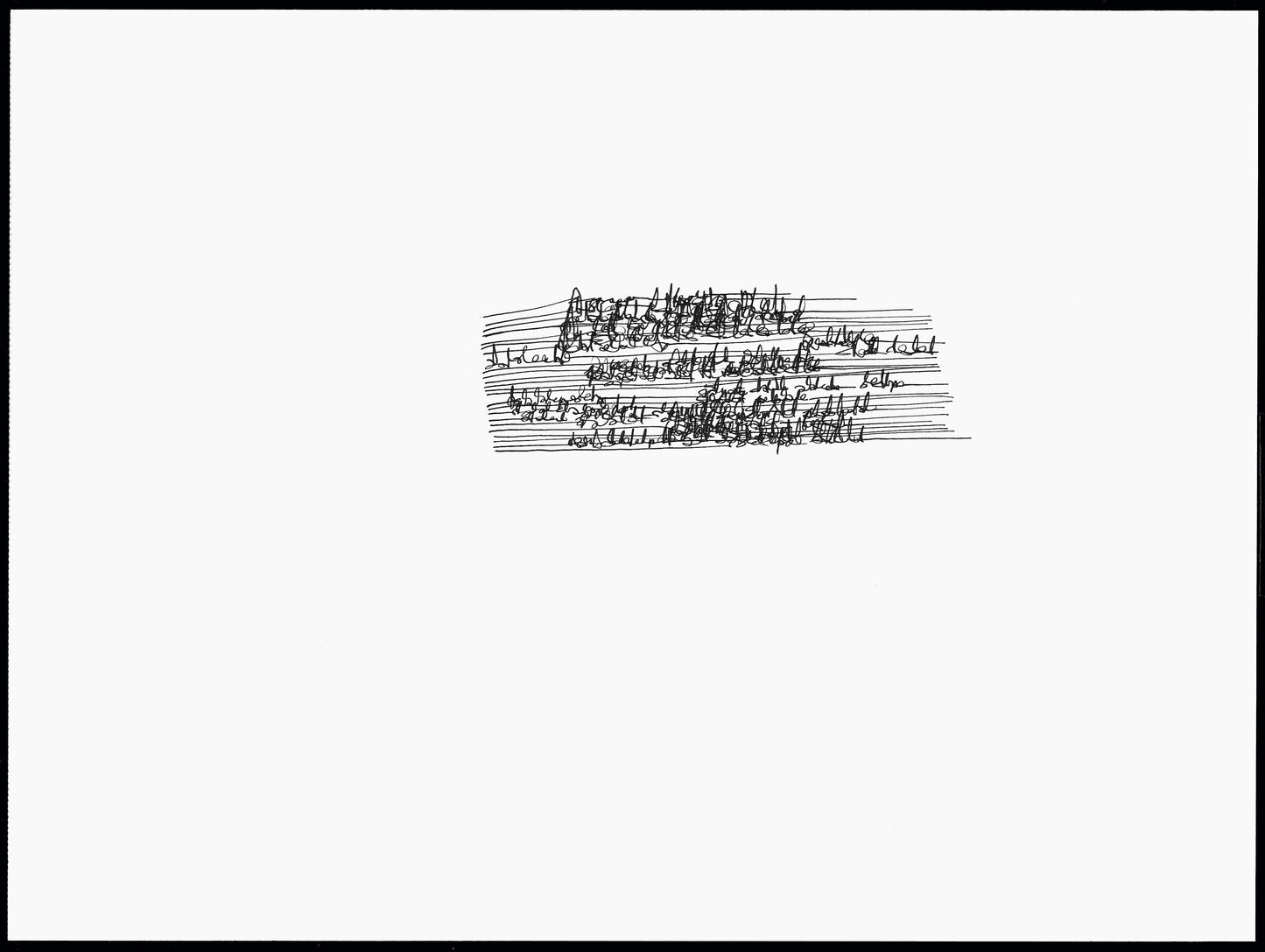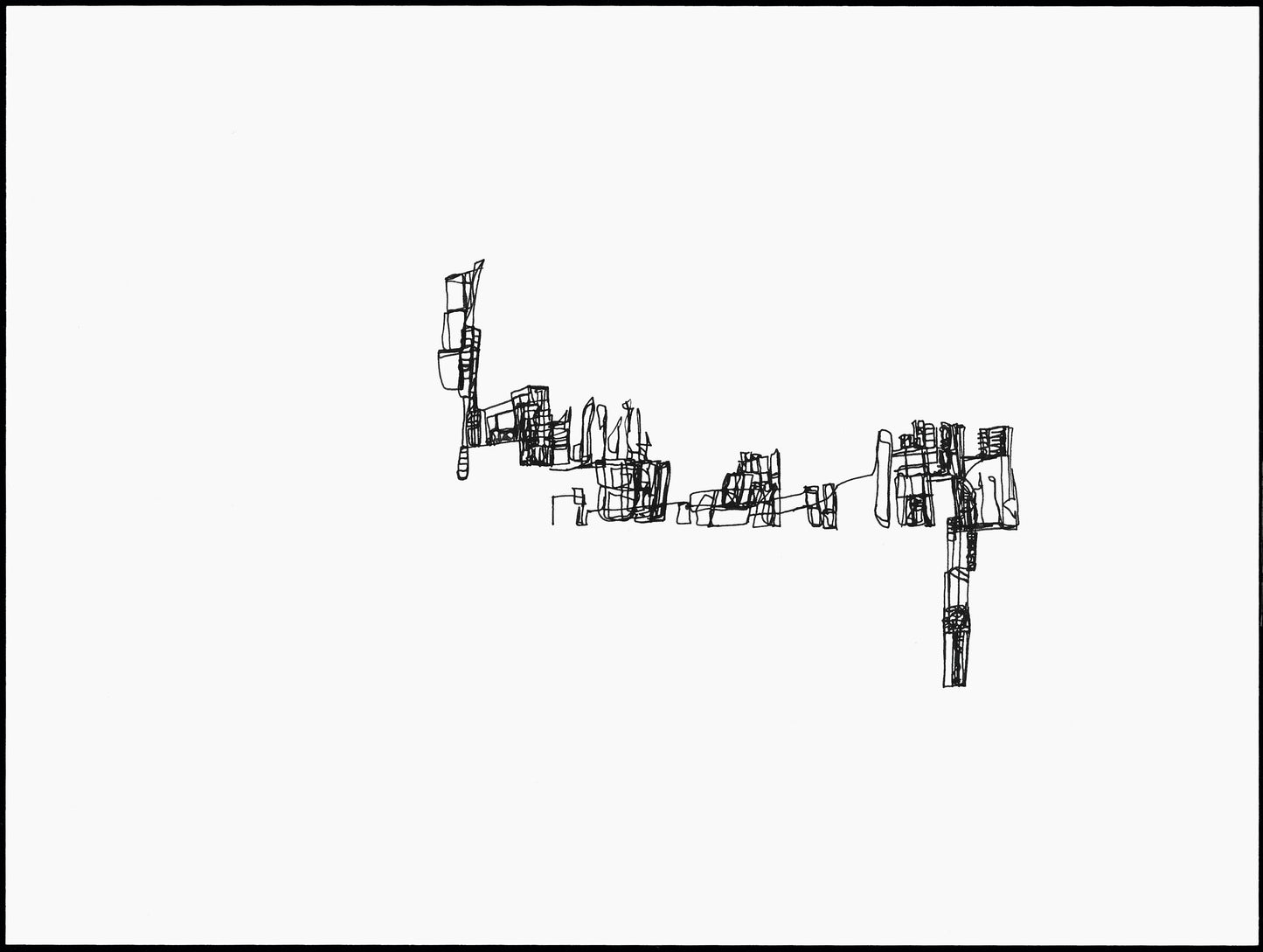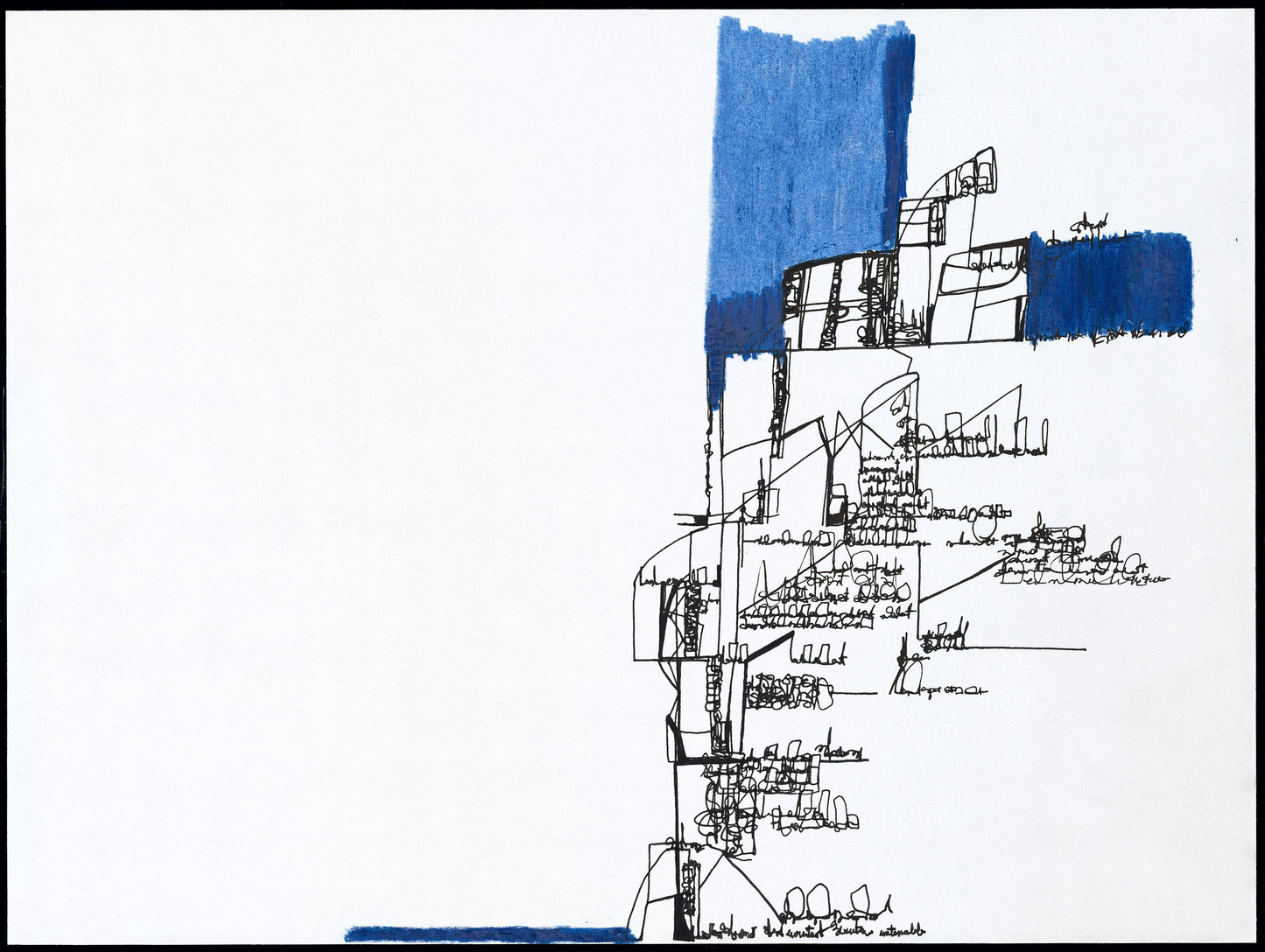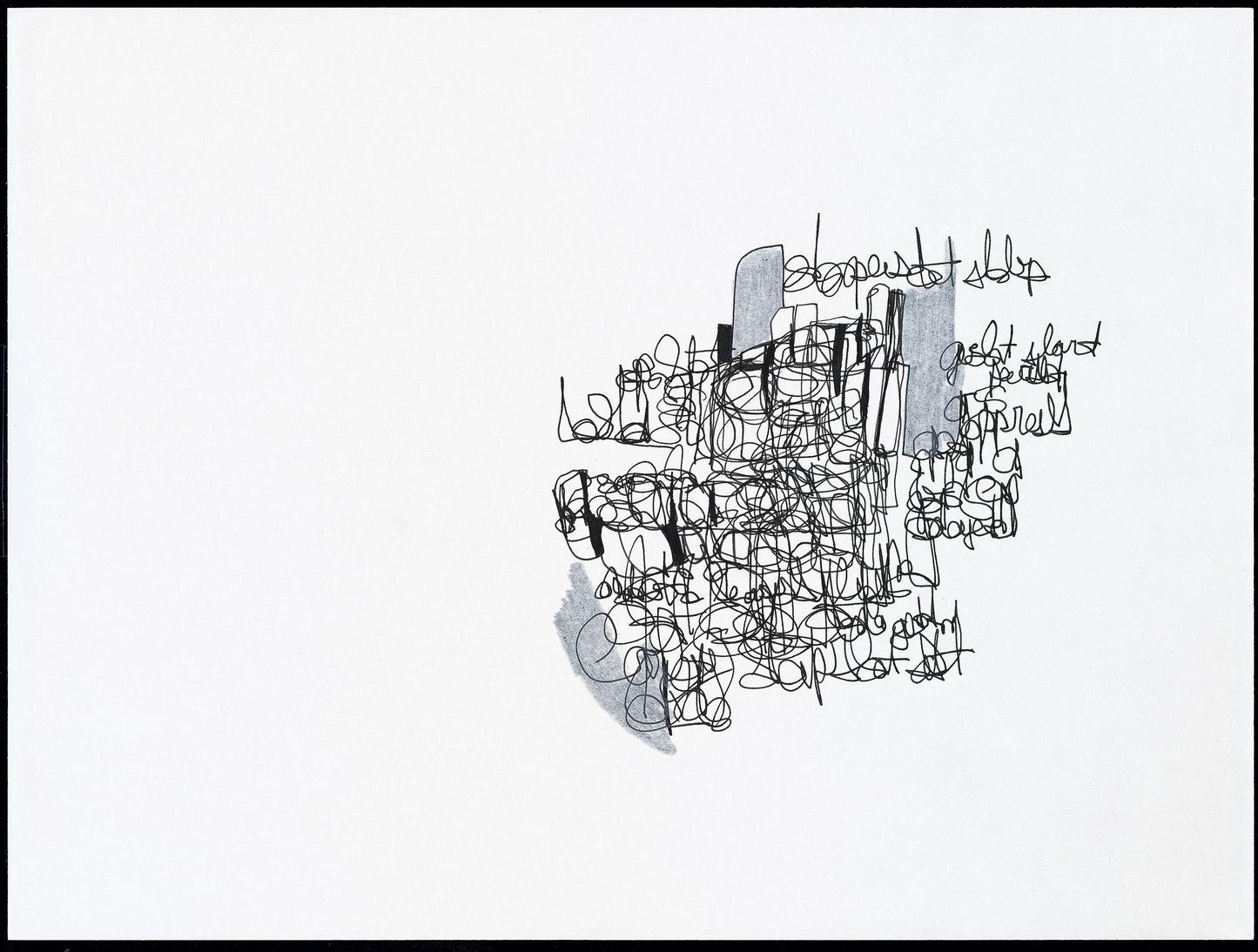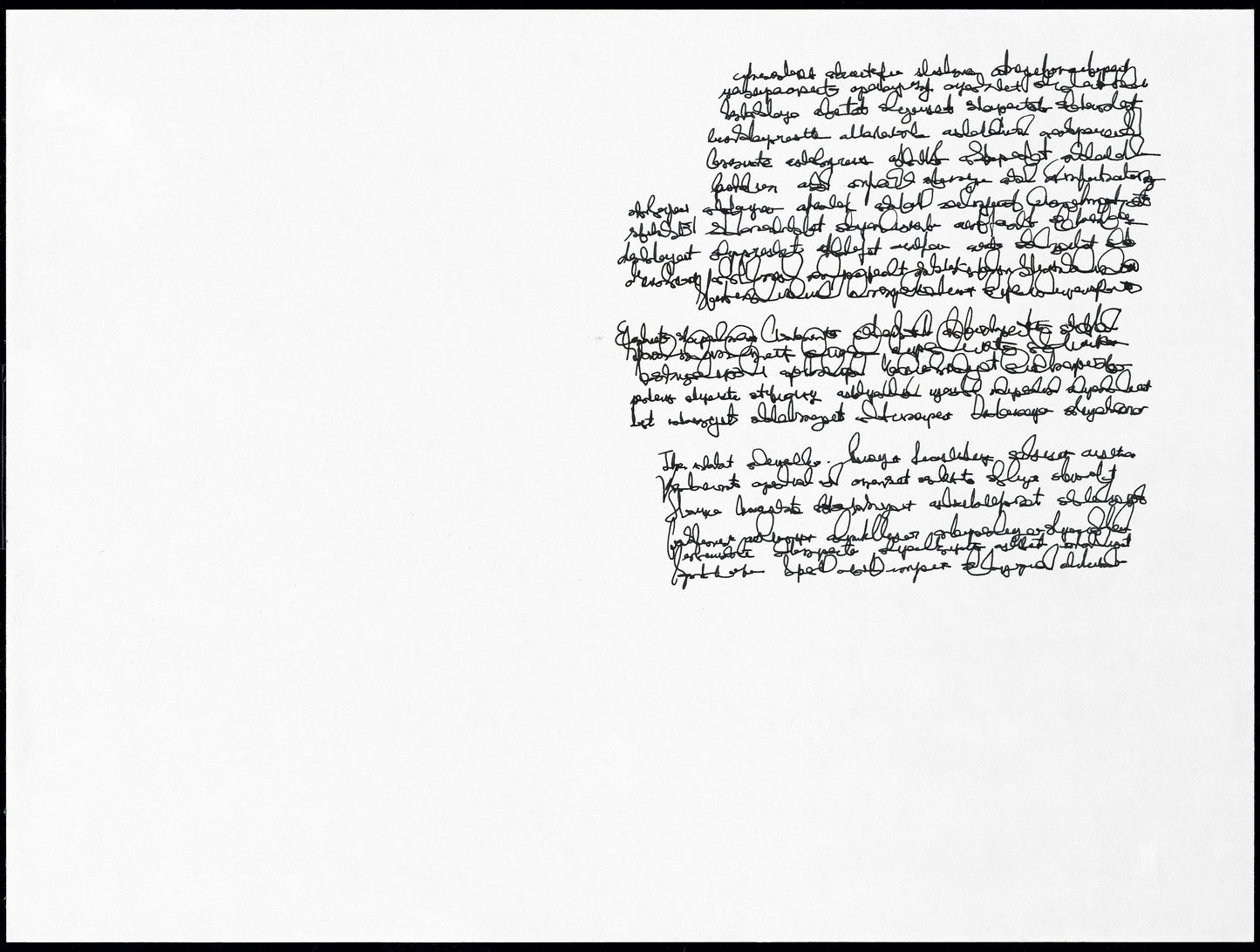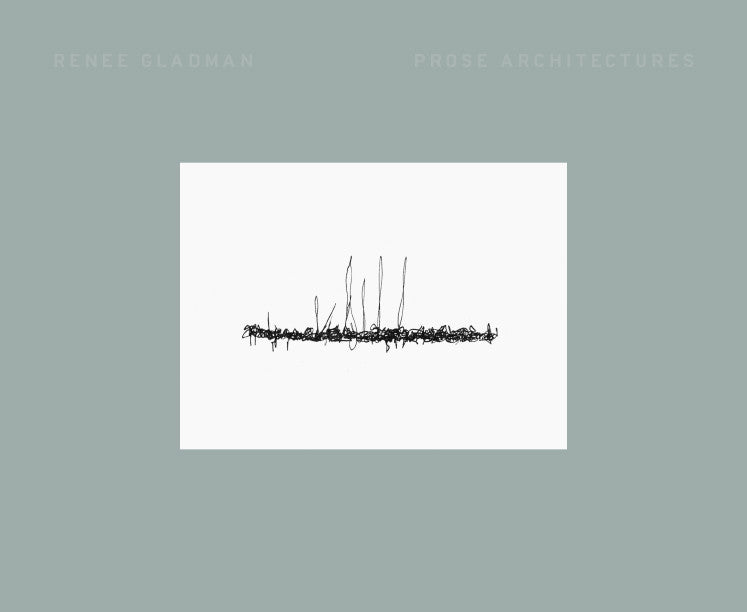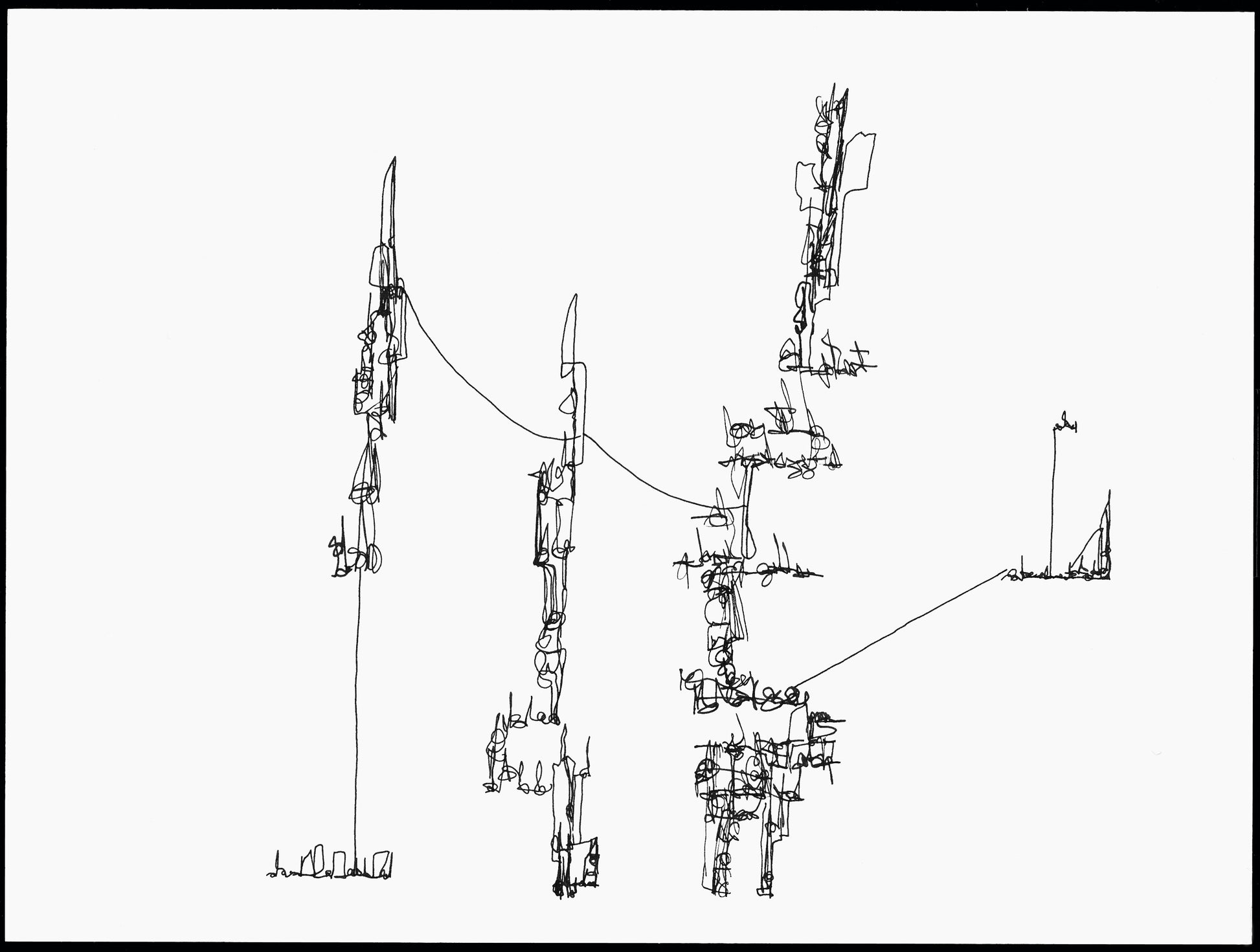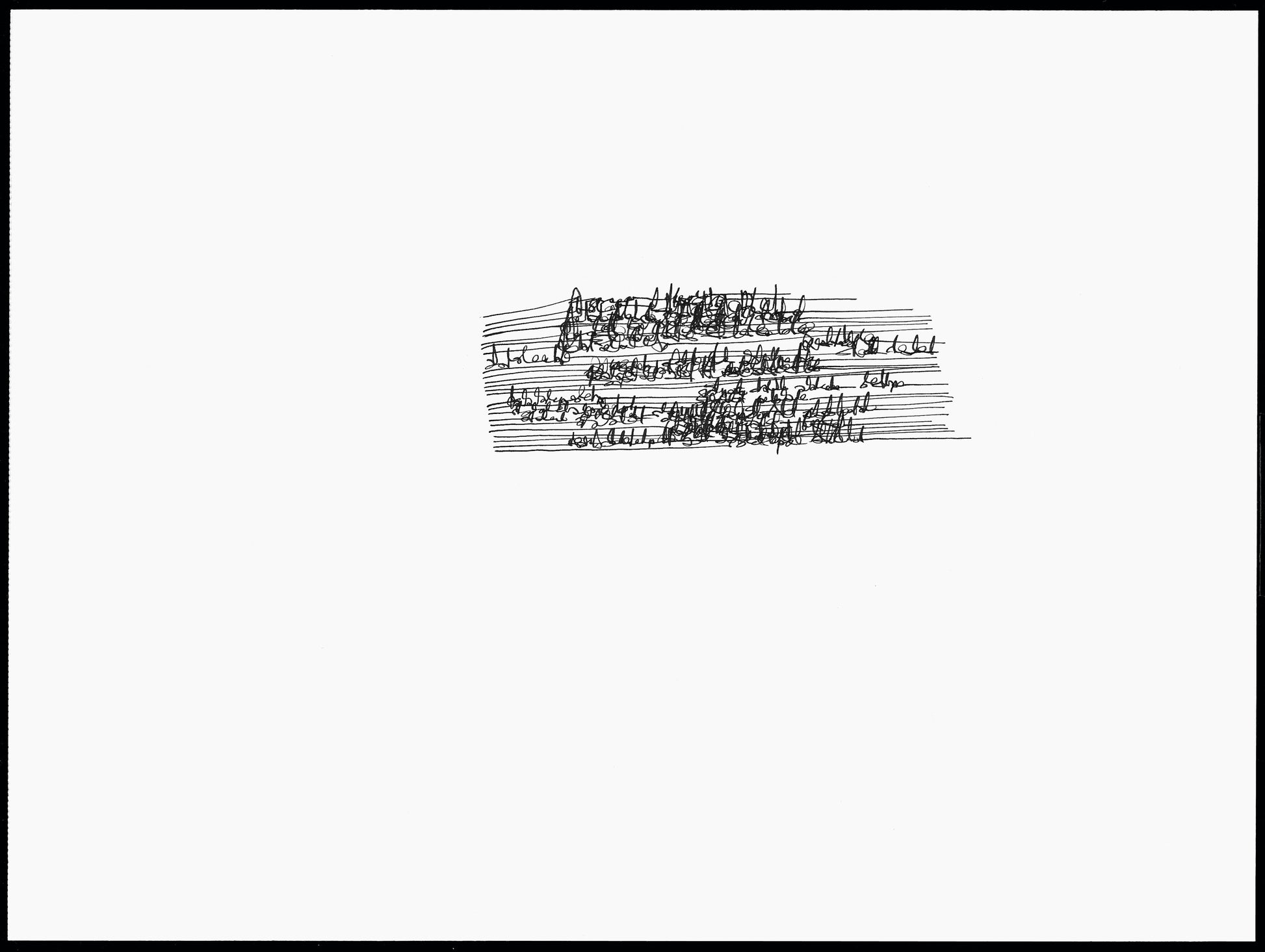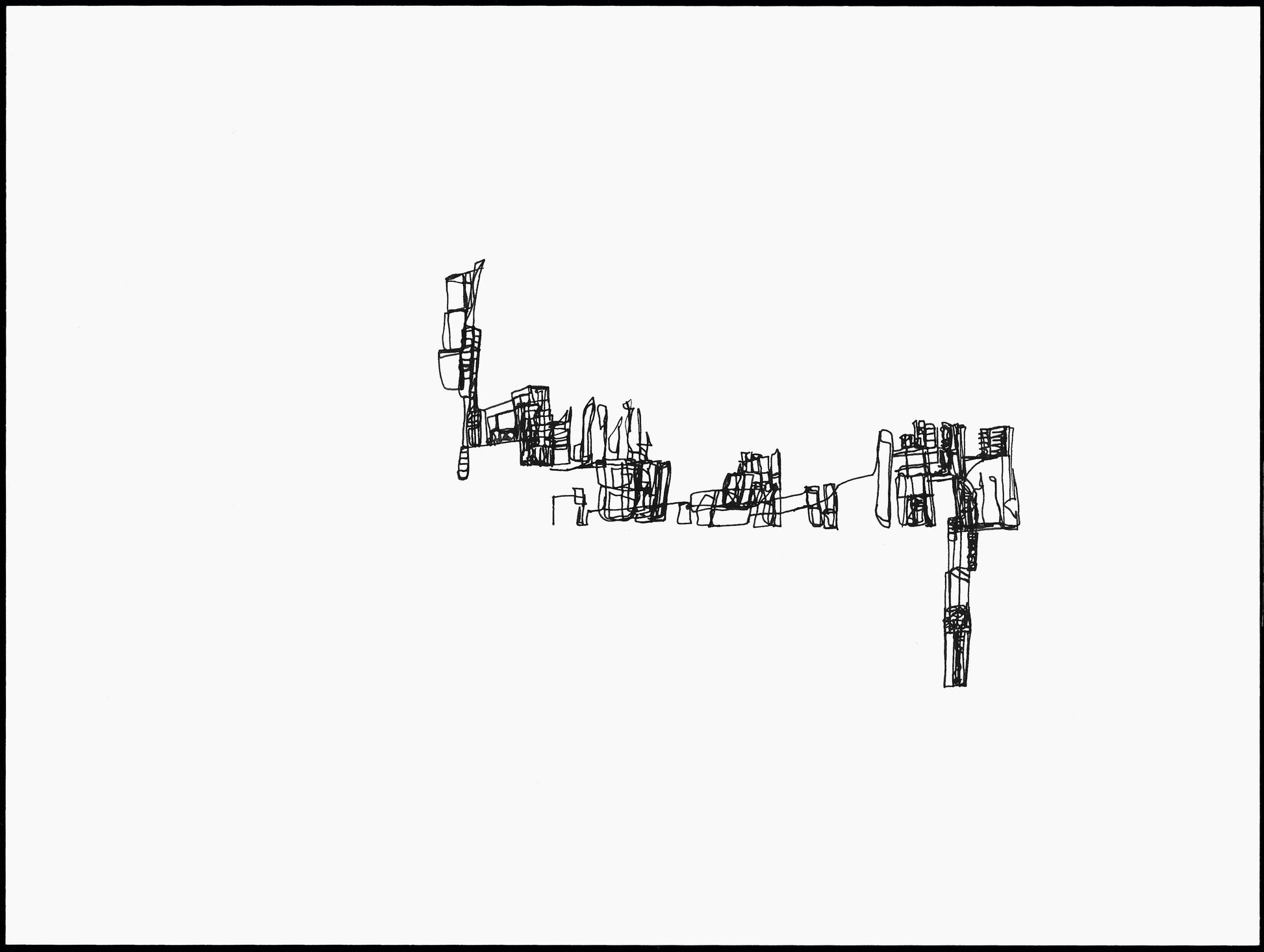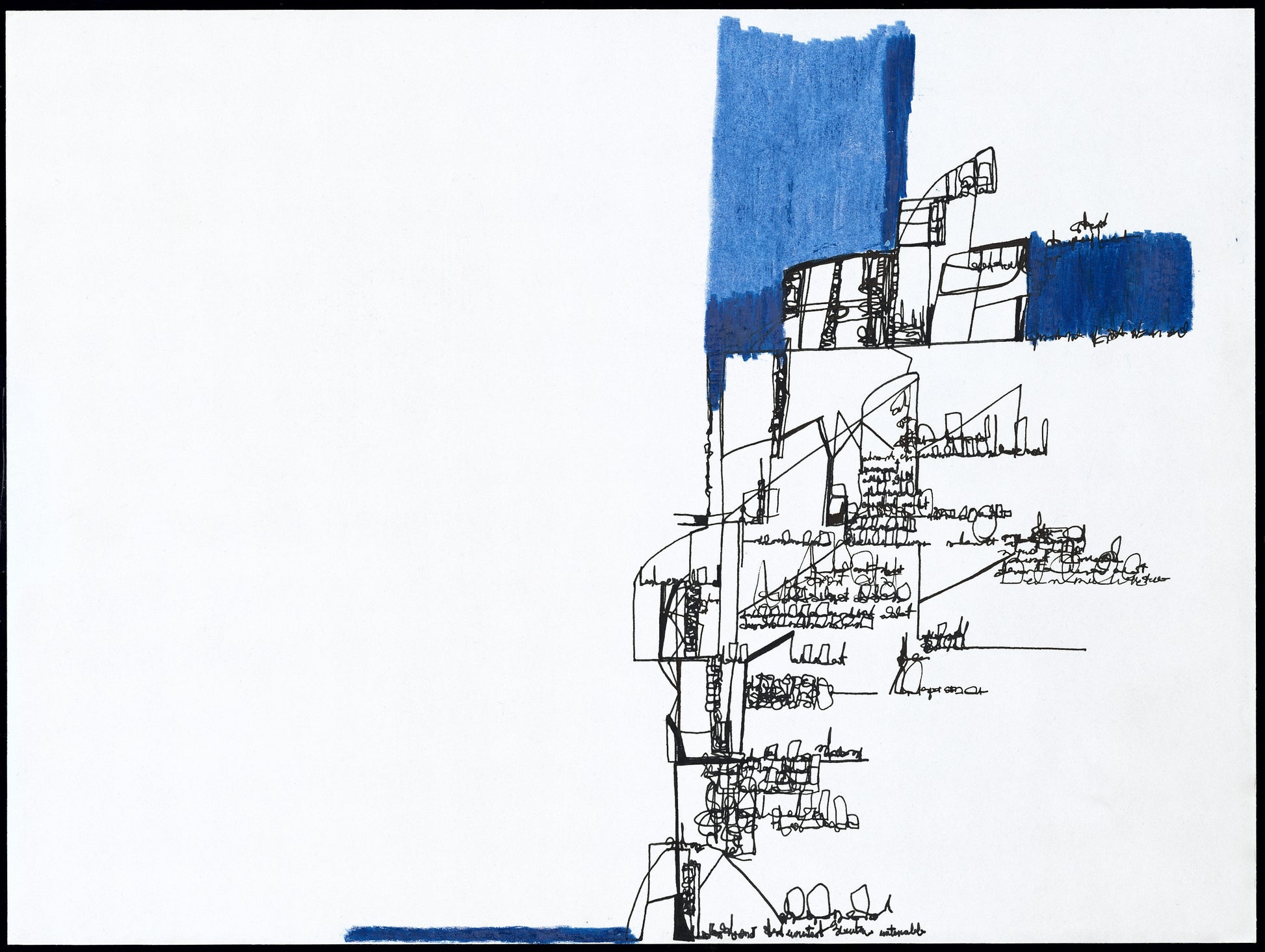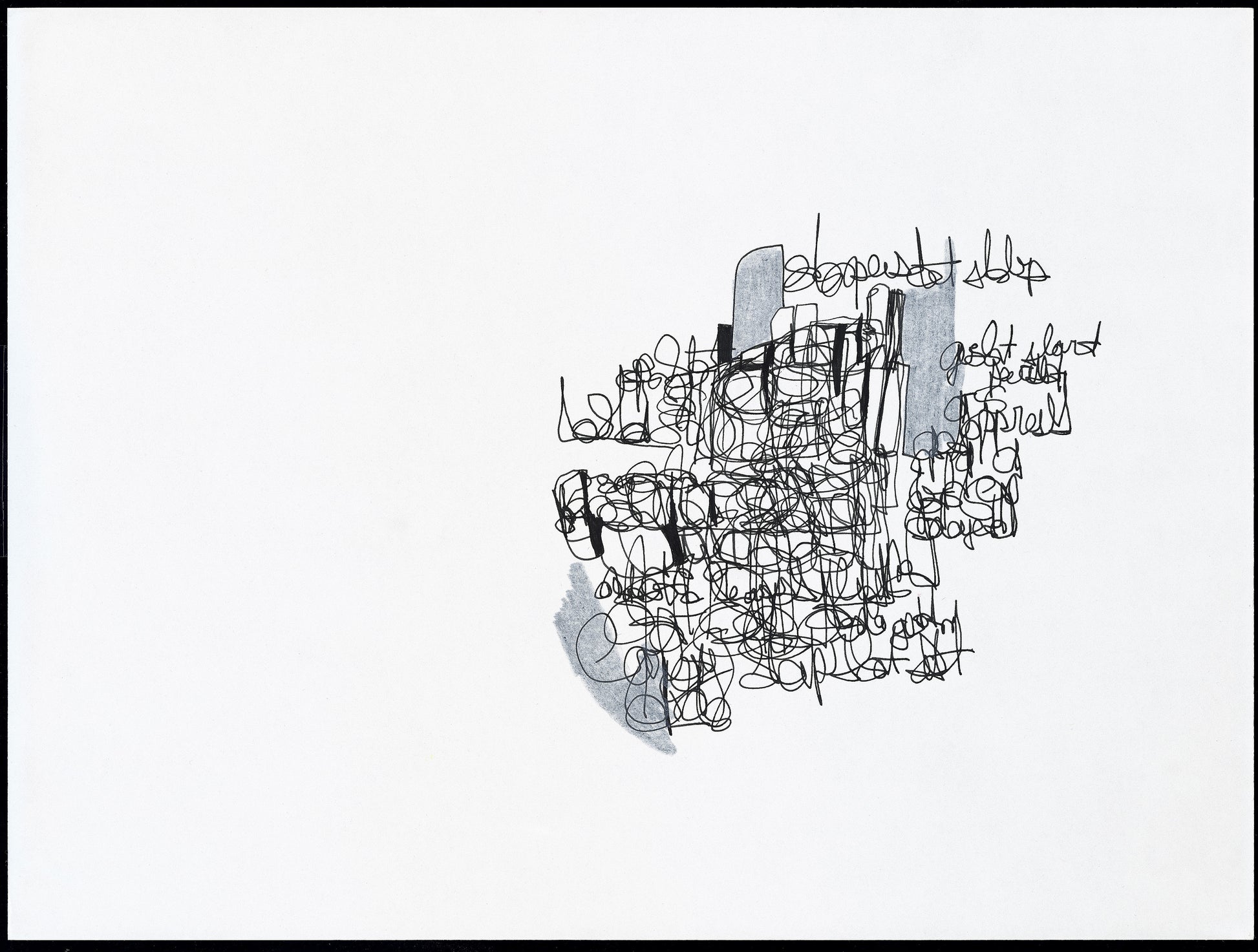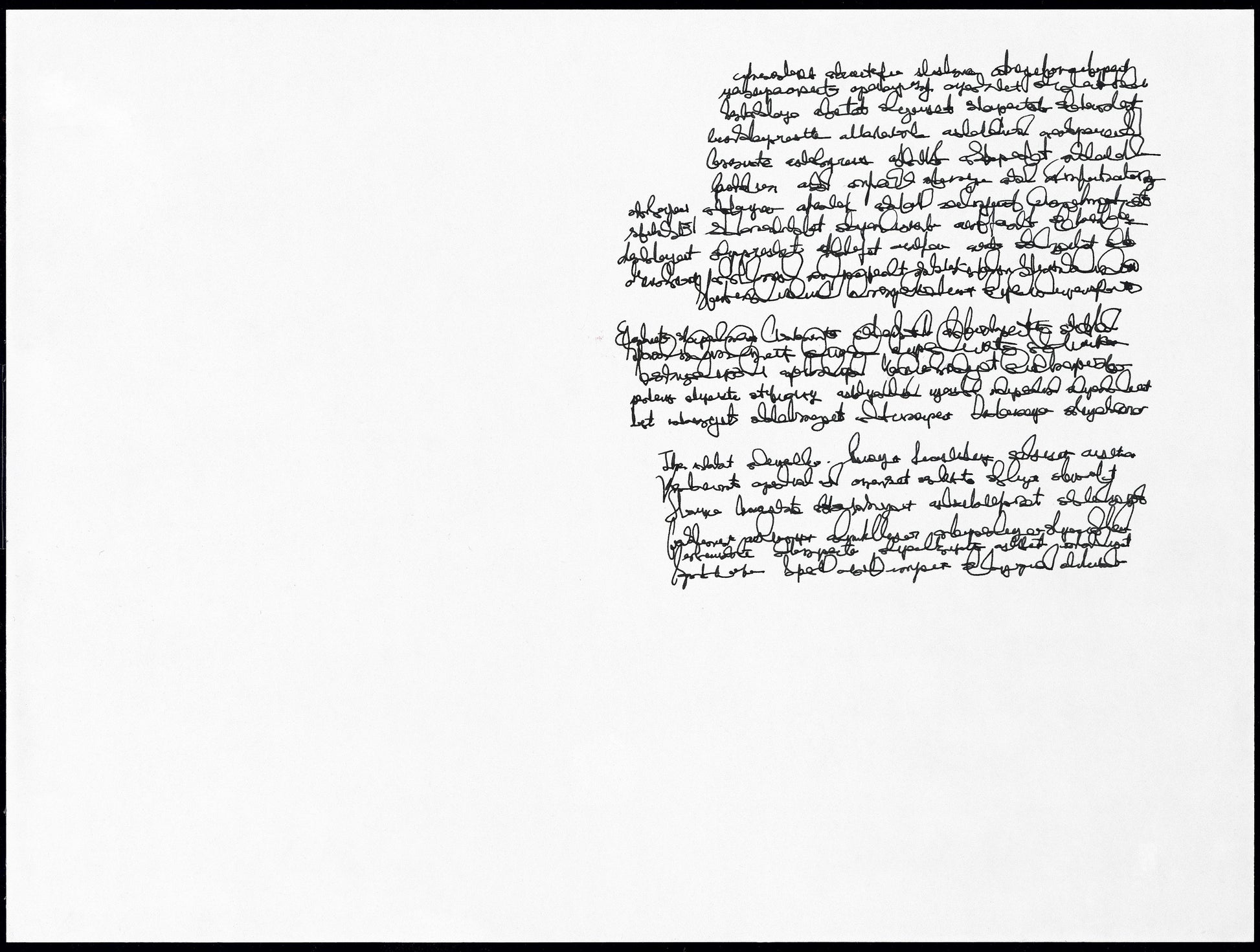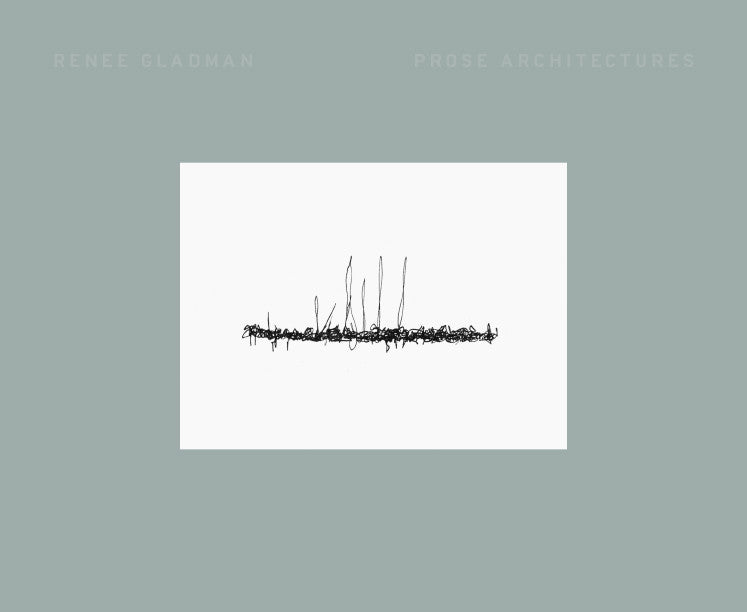
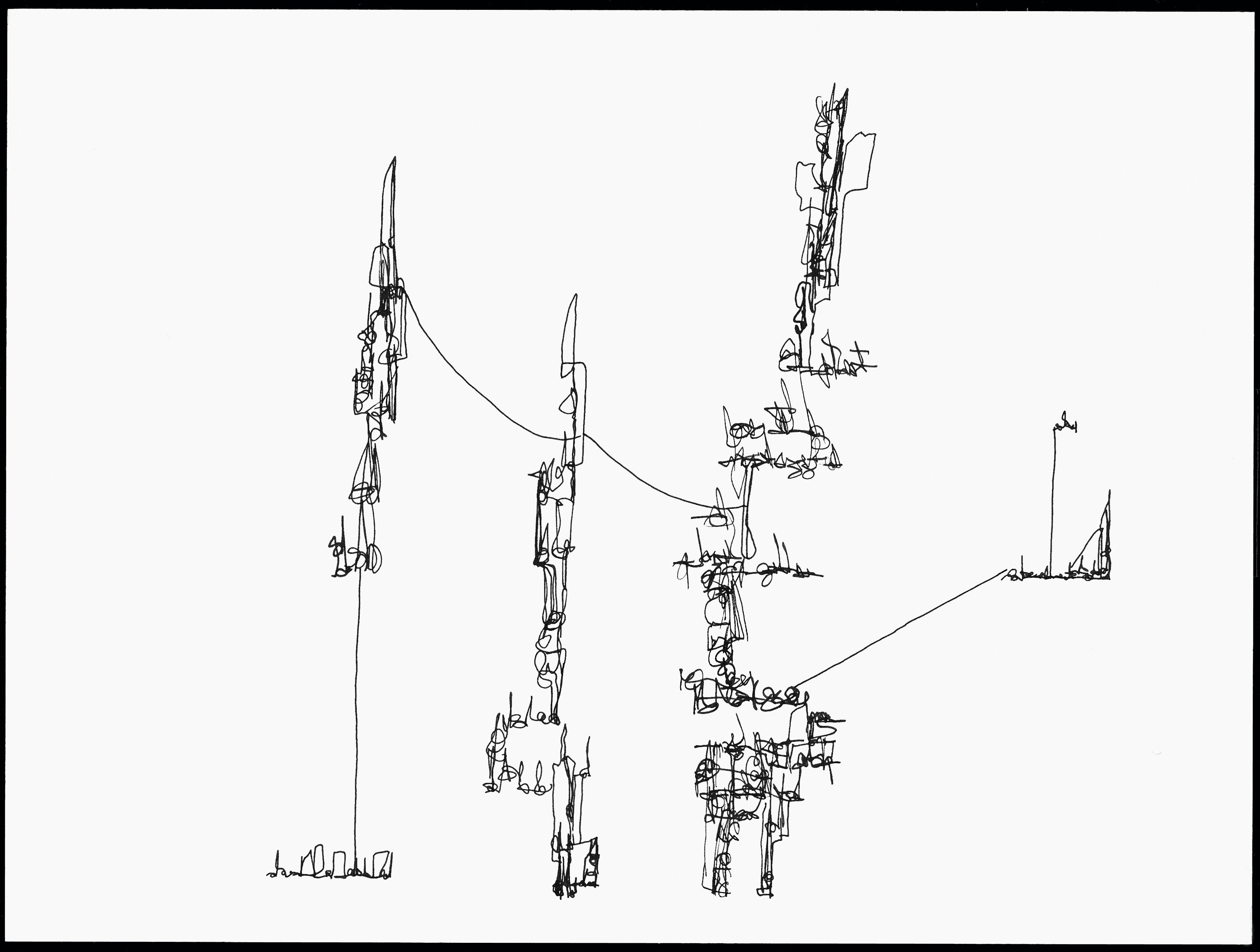
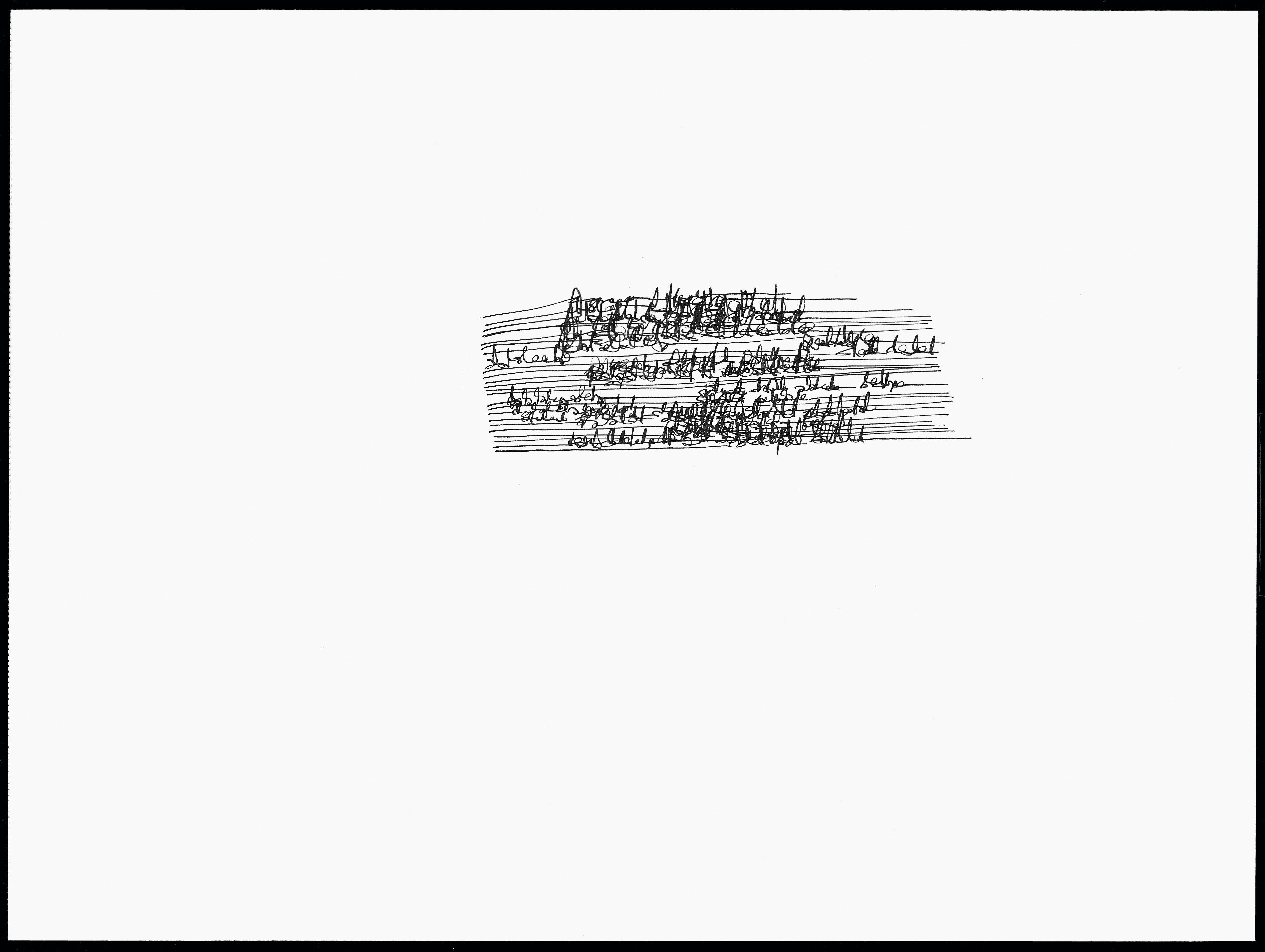
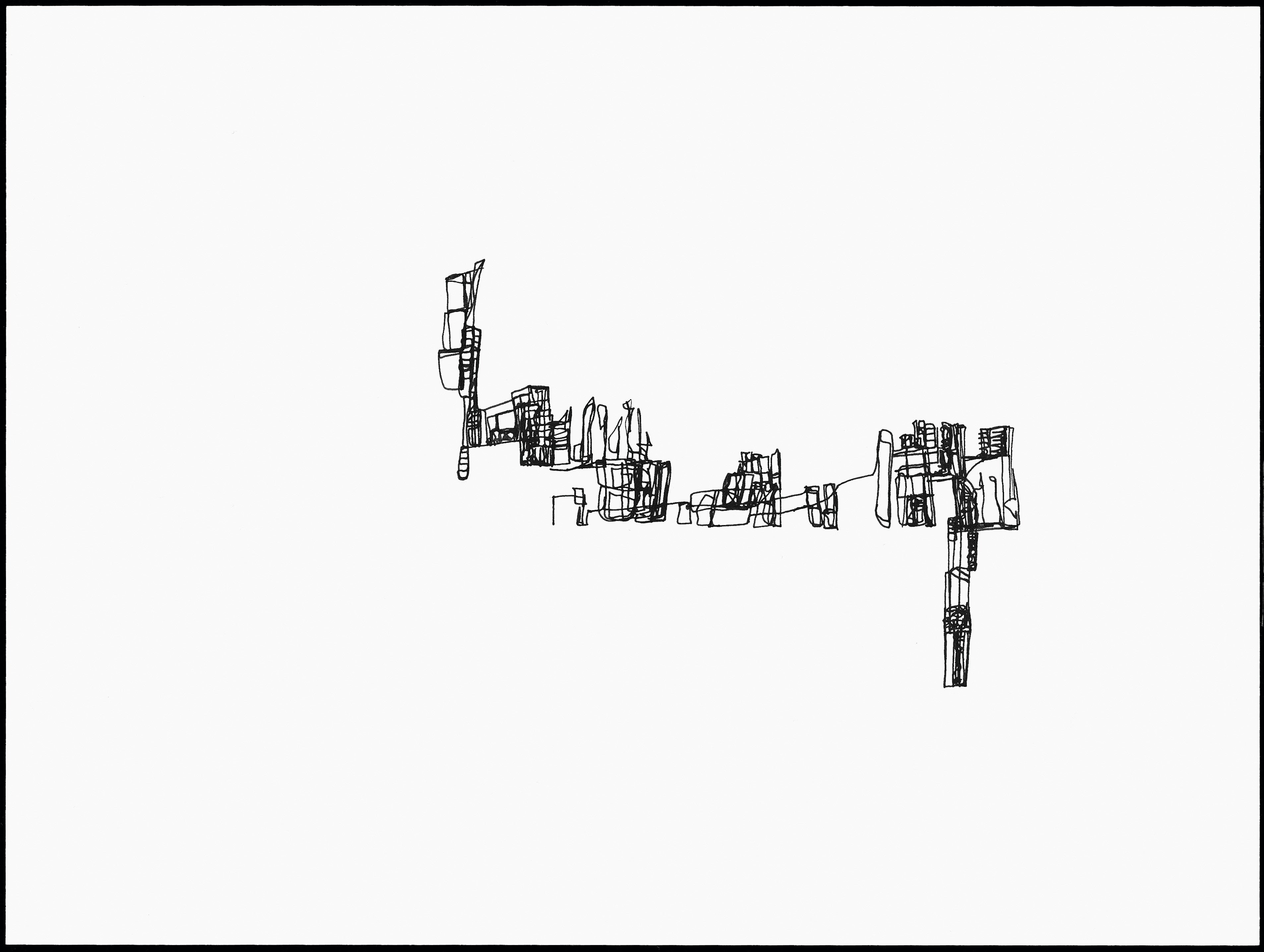
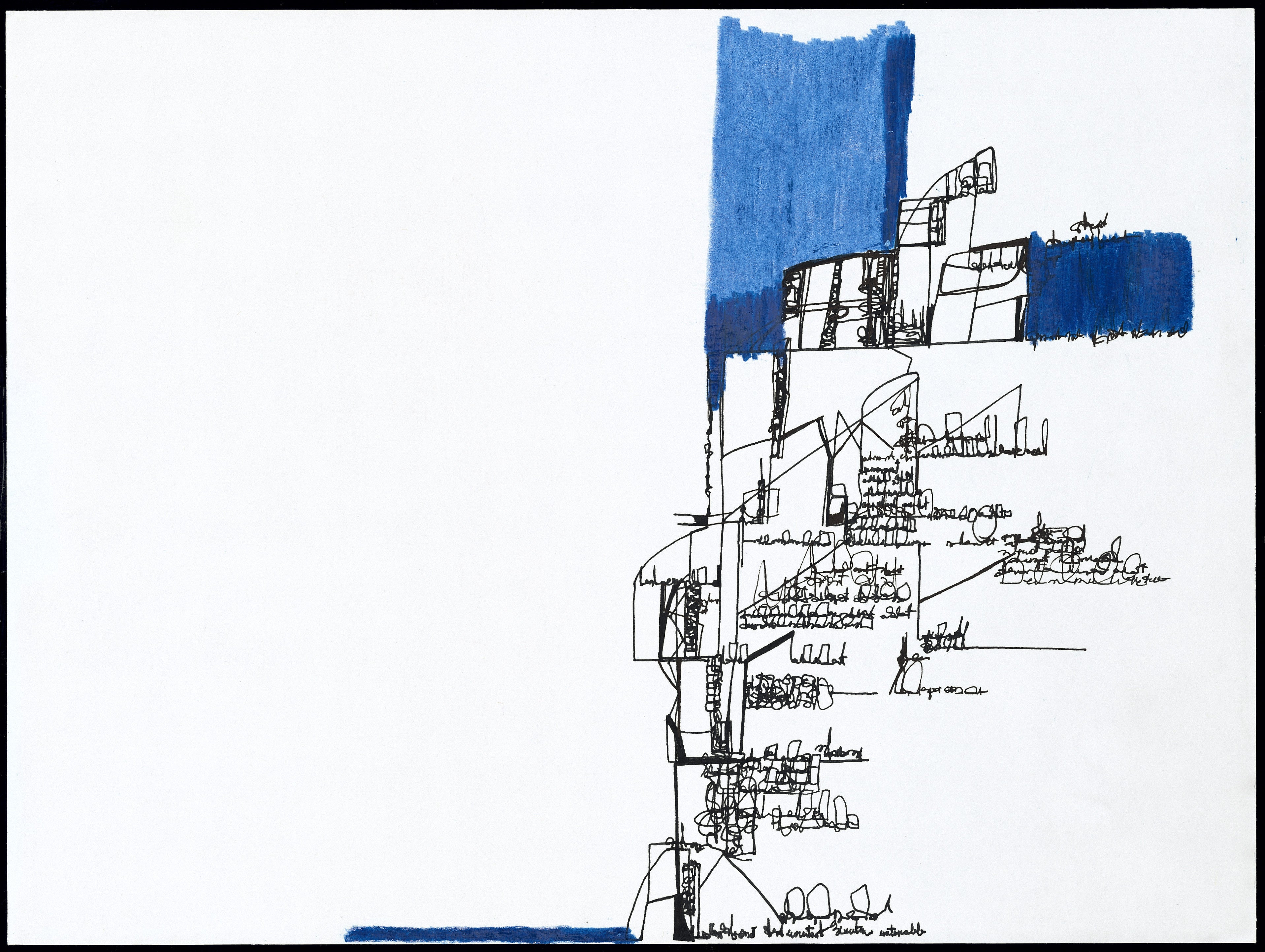
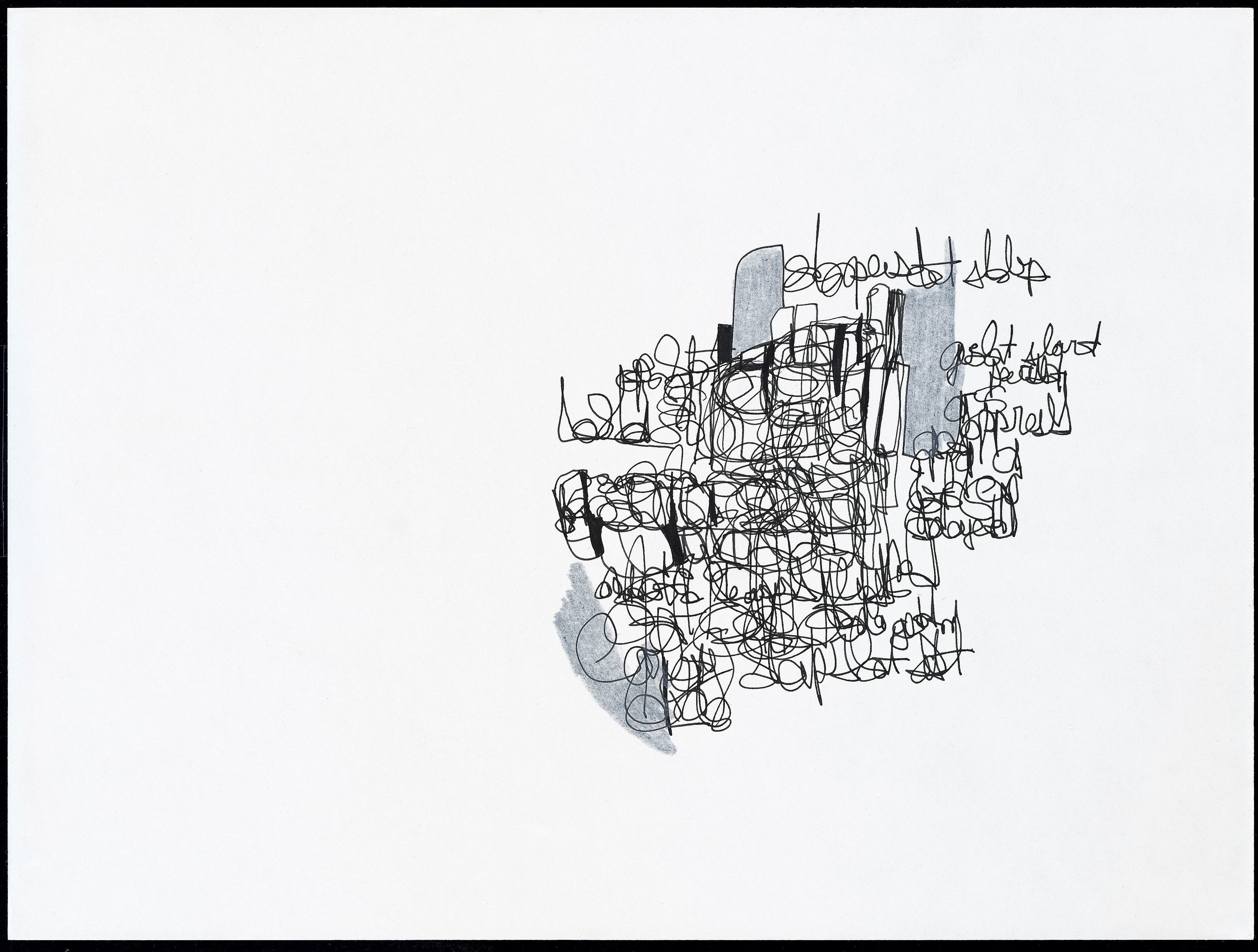
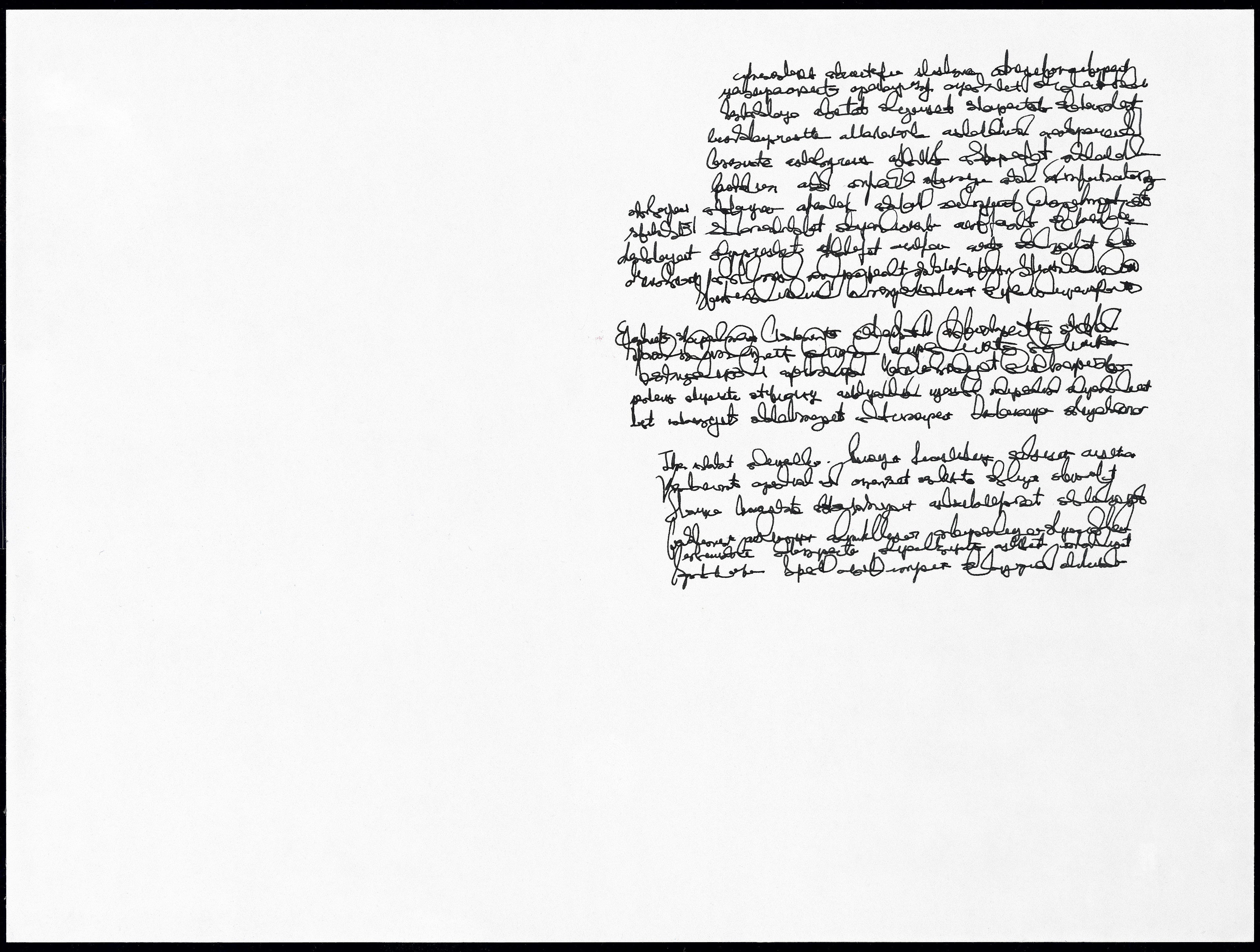
Prose Architectures
Prose Architectures
-
A book of ink drawings that regards language as an exposed nervous system, uncovering the moment whereby architecture emerges out of prose, the sentence becomes a drawing, and the act of writing narrative can be examined from bodily movements. Gladman beautifully uses the drawings as an extension of her writing process, as a way to free language from constraint.
Excerpt from Prose Architectures introduction by Renee Gladman:
"Drawing extended my being in time; it made things slow. It quieted language. It produced a sense that thinking could and did happen outside of language: I saw it as a line extending from the body, through the hand, as if something were being poured or pulled out of oneself, but here, finally, because it is impossible to achieve this in writing, in time with thought rather than chasing thought through syntax, as something already over, a moment we can now only describe. Drawing was going into time; it was pulling the process of thought apart, and what was most profound was that it left a record behind, a map: the drawing itself." -
The 100-plus drawings that follow evoke cityscapes and city shapes. But they resist figurative representation, instead creating richly imagined abstract spaces.
Publishers WeeklyBoth [Gladman's] writing and drawing practices share a concern with the limits of language, an emphasis on documenting presentness (in thought and the body), and a preoccupation with architecture. In Prose Architectures, Gladman creates more than just writing or drawings—she creates dwelling places.
John Vincler, Paris ReviewGladman’s lines are very much of the body as it extends the body’s syntax and grammar onto the page, filling it with crossings, cosmologies, topographies rather than legible, discernable language. As I paged through these drawings, they felt familiar, and I searched for words, feelings, and images that resembled the shapeliness before me, but my language couldn’t catch up, which vexed me in the best way.
Miriam Karraker, Kenyon ReviewA sumptuous edition. . . . Made in the negative space between two books of the Ravicka series, the drawings themselves magnify the liminal or the in-between: circulation lanes, parks, air, and water systems. Gladman’ s scribble-like plans, which resemble thinner, more delicate counterparts to Rorschach’ s inkblots, evoke alternately an alveolar arrangement, a power grid, and a public performance space or perhaps a site of political assembly.
Jean-Thomas Tremblay, Chicago ReviewUltimately, as I consider the drawings of Prose Architectures, I am fascinated by them as a record of the life of writing by “not-writing.” . . . If Calamities brilliantly describes a threshold whereupon words begin to pass into something else, Prose Architectures shows us what happens on the other side of this elusive boundary.
Thom Donovan, HyperallergicJust as a descriptive writer may “draw” a scene using words, Gladman’s drawings seem to trace the contours of her thinking — notes without syntax, maps without scale, blueprints without measurement...The genius of Gladman’s drawings lies in their ability to capture the original process of thought accurately, without tying it to anything we already know.
Iris Cushing, HyperallergicTarrying with negativity, [Gladman’s] linguistification of space transcends any narrow question of penmanship. It is a challenge to perception that bears directly on the subject of politics.
Cam Scott, Berfrois[Gladman's drawings] visualize language as a city we can wander through and in doing so they break all the rules. They walk the wrong way down one-way streets and climb the exteriors of buildings. They take fundamentals of the structure, rules of building and assemblage, and turn them upside down forcing us to rethink how we read and what it is we want to build.
Megan N. Liberty, Brooklyn RailWhat Gladman attempts to capture is the difficulty of gesture itself, of every minutia, every instantiation, every thought, every lacuna that perpetually drives ways of relation. If Gladman’s drawing writing therefore returns us to a sense of senselessness, it would behoove one to think of this gesture less as an exposé of relationality than a reminder. It is within this view that Gladman’s drawn writings seem stubbornly alive.
Prathna Lor, Jacket2
Publication Date: June 20, 2017
ISBN# 9781940696461 (10.75x8.5 144pp, trade hardcover)
Couldn't load pickup availability
